|
Monday 23rd to
Sunday 29th May 2022 |
| |
|
If you're up before dawn, say from 4am on
Thursday 26th, a thin waning Crescent Moon will be located to the east. To
the left of that is planet Venus and to the right of the Moon you will find
Jupiter and Mars. Even further to the right, looking roughly south east,
you can find Saturn. |
| |
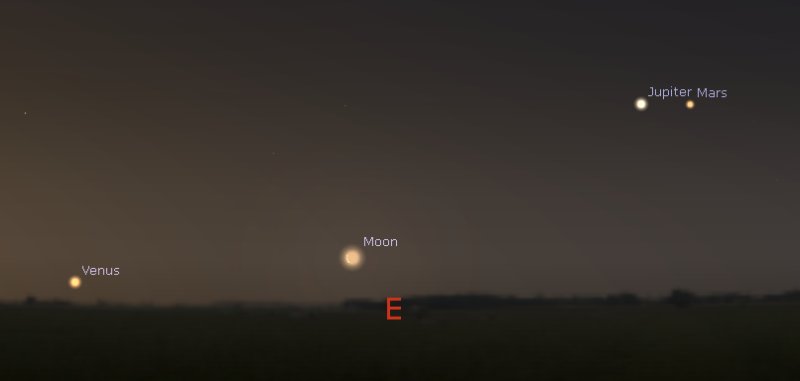 |
| |
|
Try the same trick around 4am on Sunday 29th
and you will be rewarded by seeing Jupiter and Mars in conjunction. |
| |
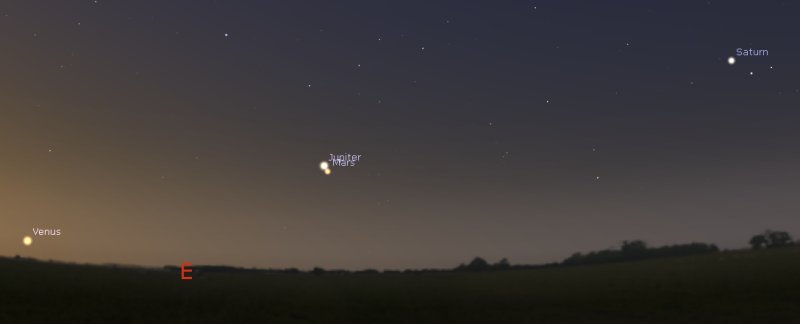 |
| |
|
This astronomical term means that the two
planets appear very close together. Of course it is just an optical
illusion because of the angle you are viewing them from - in reality they
are millions of miles apart! Technically speaking, the planets share
the same Right Ascension. To identify a place on the Earth we use latitude
and longitude. When looking at the night sky, astronomers use Declination
which is the equivalent to latitude and Right Ascension for longitude. |
| |
|
The end of May sees the beginning of the
Noctilucent Cloud season. You can see them if looking towards the north
west horizon 1 - 2 hours after sunset. The clouds are created by sunlight
reflecting from ice crystals high in the upper atmosphere. They are too
faint to be seen in daylight. |
| |
|
The clouds may also been seen an hour or two
before sunrise when looking towards the north east horizon, so if you are up
early to witness the conjunction of Jupiter and Mars on Sunday 29th, that
would be an ideal opportunity. |
| |
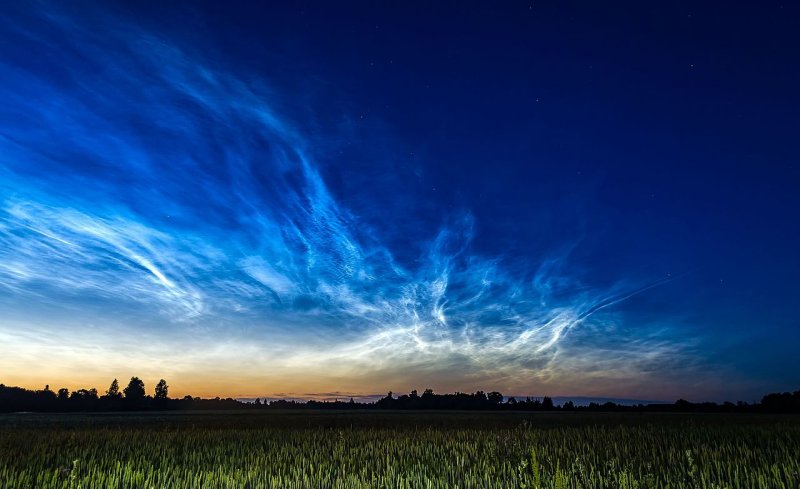 |
| |
|
Noctilucent clouds over Varbla in
Estonia, courtesy of Wikipedia |
|
Monday 16th to
Sunday 22nd May 2022 |
| |
|
The early morning of Monday 16th sees a total
lunar eclipse. The Full Moon will enter the Earth's outer shadow at
2.32am. Totality begins at 4.29am. Between those times, the Moon will be
located towards the south west. |
| |
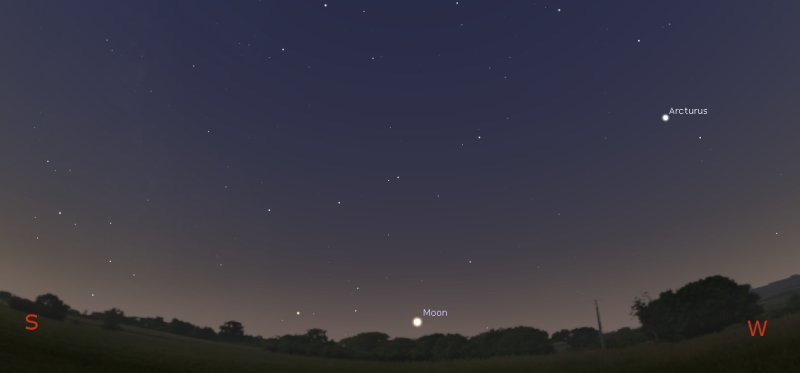 |
| |
|
You will only be able to observe the totality
for about half an hour because it will be getting light at 5am and this will
destroy the effect. |
| |
|
A lunar eclipse occurs when the Earth lies
directly between the Sun and the Moon and the Moon lies in the shadow of the
Earth. For a total lunar eclipse, all three bodies have to lie in a
straight line so that the Moon passes through the darkest part of the
Earth's shadow, technically known as the "Umbra". |
| |
|
During a total lunar eclipse the Moon turns a
deep red because it is being illuminated by sunlight that has passed through
the Earth's atmosphere and the light is then bent back towards the Moon by
refraction. |
| |
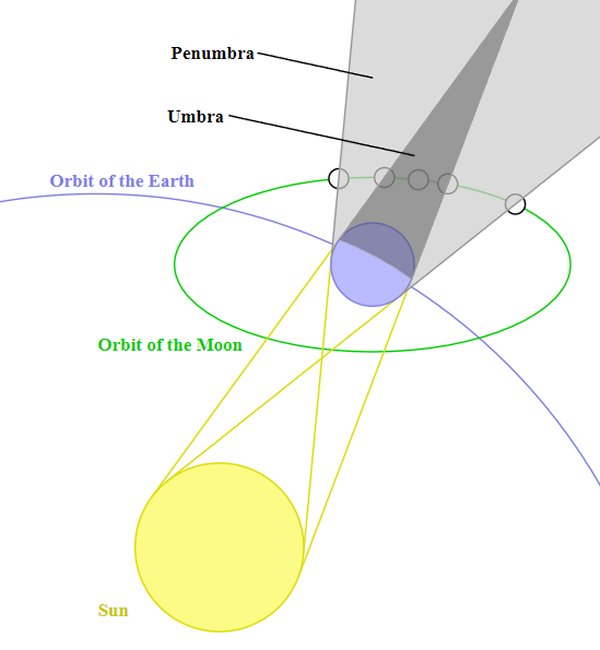 |
| |
|
Diagram courtesy of Wikipedia |
| |
|
There are a few good evening opportunities to
spot the International Space Station next week. Monday 16th at 11.06pm,
Tuesday 17th at 11.55pm, Wednesday 18th at 11.07pm and slightly earlier on
Thursday 19th at 10.19pm. The ISS will appear in the west and spend the
best part of 7 minutes passing almost directly overhead, before disappearing
towards the east. |
|
Monday 9th to
Sunday 15th May 2022 |
| |
|
The evening of Tuesday 10th provides an
opportunity to observe one of the Clair-Obscur lunar visual effects known as
the "Jewelled Handle". The Moon will be to the south west at 10pm and the
effect is caused by sunlight reflecting off the peaks of the Jura Mountains
that are located towards the north on the nearside face of the Moon. |
| |
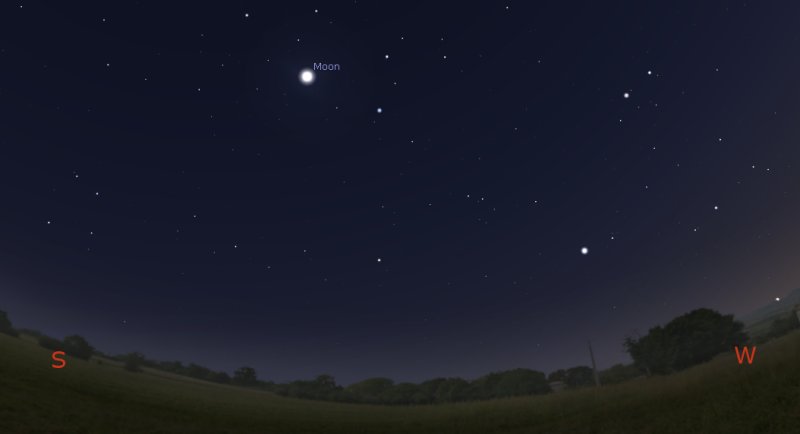 |
| |
|
To help you spot it, below is a diagram of
the different Clair-Obscur effects courtesy of Sky At Night Magazine and an
image of the Jewelled Handle courtesy of Pete Lawrence. |
| |
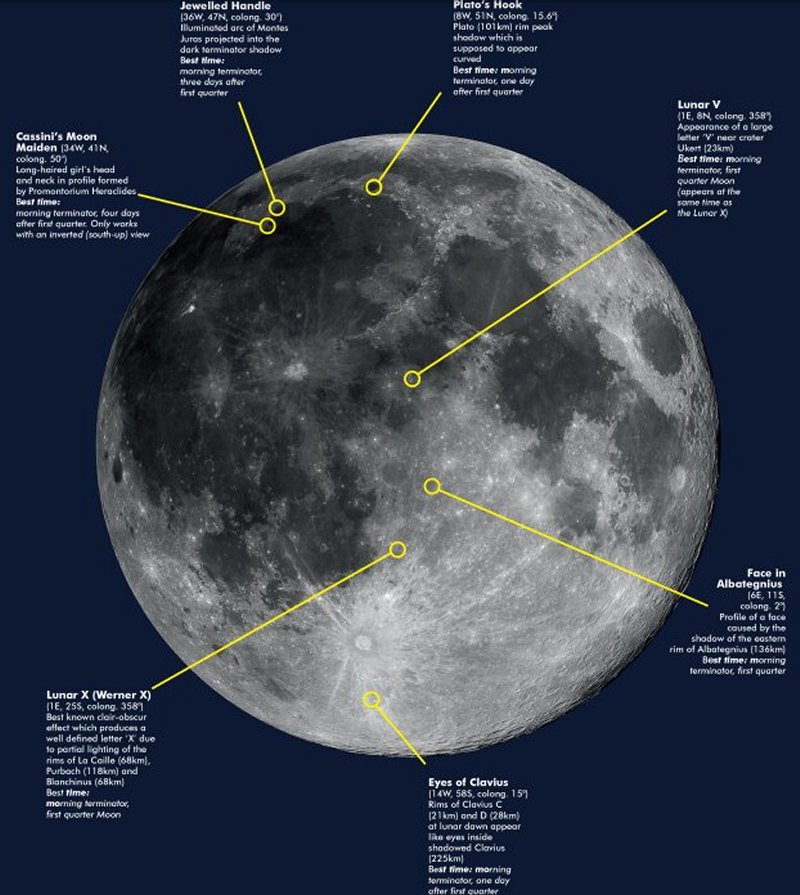 |
| |
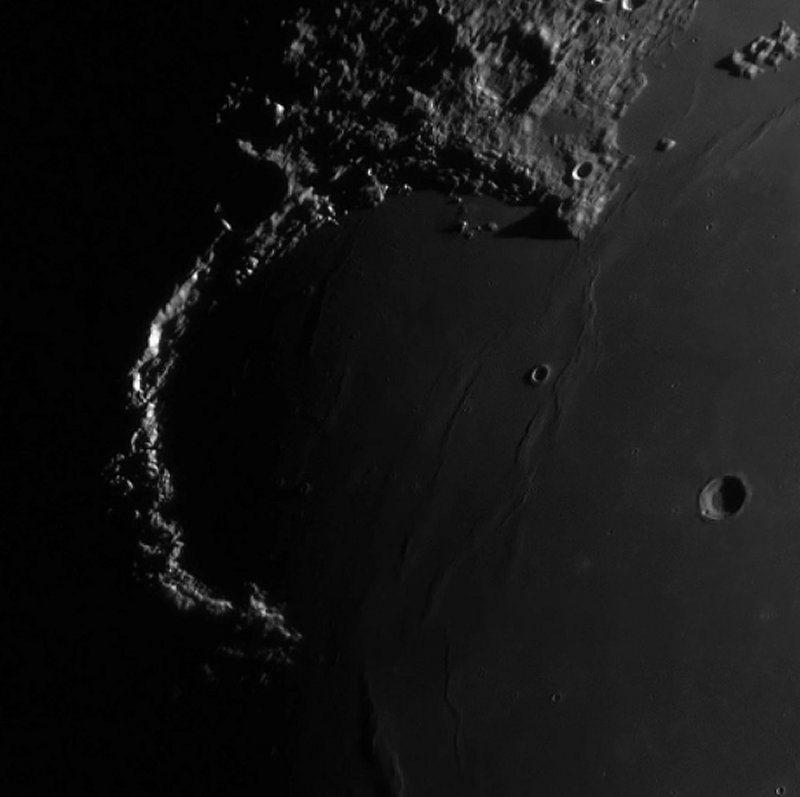 |
| |
|
For very early risers there are some great
opportunities to spot the International Space Station next week. Monday 9th
at 3.55am, Wednesday 11th at 3.55am and Thursday 12th at 3.07am. In all
three cases, the ISS appears close to the west horizon and spends seven
minutes passing almost directly overhead before disappearing to the south
east. |
| |
|
The
ISS is only visible because sunlight reflects from its enormous solar panels
- in the same way, you only see planets because sunlight is bouncing off
their surface. Of course, the ISS is much closer and highly reflective so
it looks really bright! |
|
Monday 2nd to
Sunday 8th May 2022 |
| |
|
The morning of Friday 6th sees the peak of
the Eta-Aquariids meteor shower that coincides with a moonless sky, so there
will be no light pollution to spoil your view. The shower is so named
because the radiant point where the meteors appear to originate from is in
the constellation of Aquarius, near one of the constellation's brightest
stars, Eta-Aquarii. |
| |
|
If you are up at around 4.15am, the
constellations of Aquarius and Capricornus will be close to the horizon in
the south east. As a bonus, for being around at that time of day, it will
also be possible to spot Mars and Saturn in the same part of the sky. |
| |
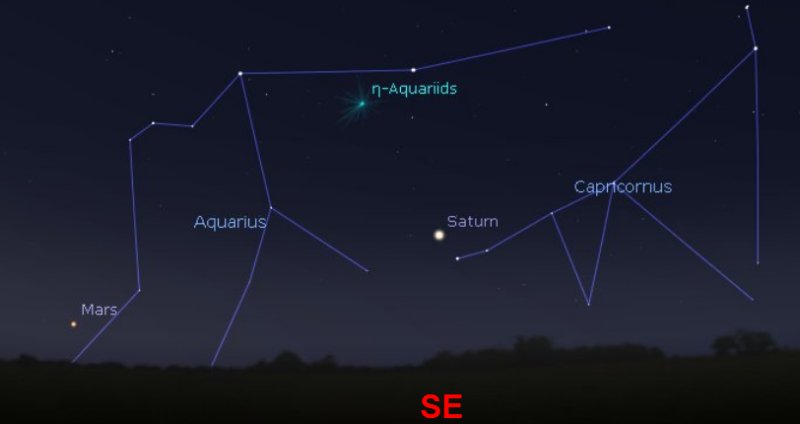 |
| |
|
Do you remember seeing Halley's Comet back in
1986 when it last entered the inner Solar System and flew around the Sun?
It is known as a "short-period" comet because its orbit makes the comet
visible from the Earth every 75 years and it will next appear in 2061. |
| |
|
The shooting stars of the Eta-Aquariids are
actually debris from Comet Halley that was left behind from some of its
earlier orbits, hundreds of years ago. At its peak, the shower can produce
up to one shooting star per minute. |
| |
|
There are a couple of excellent opportunities
to observe the International Space Station next week, but sorry - you will
need to be an early riser again! Monday 2nd at 4.39am and Wednesday 4th at
4.38am. On both days, the ISS appears in the west and spends seven minutes
passing almost directly overhead before disappearing to the east. |








